Flight Simulator
Flight Simulator for Potential Air Force Trainees
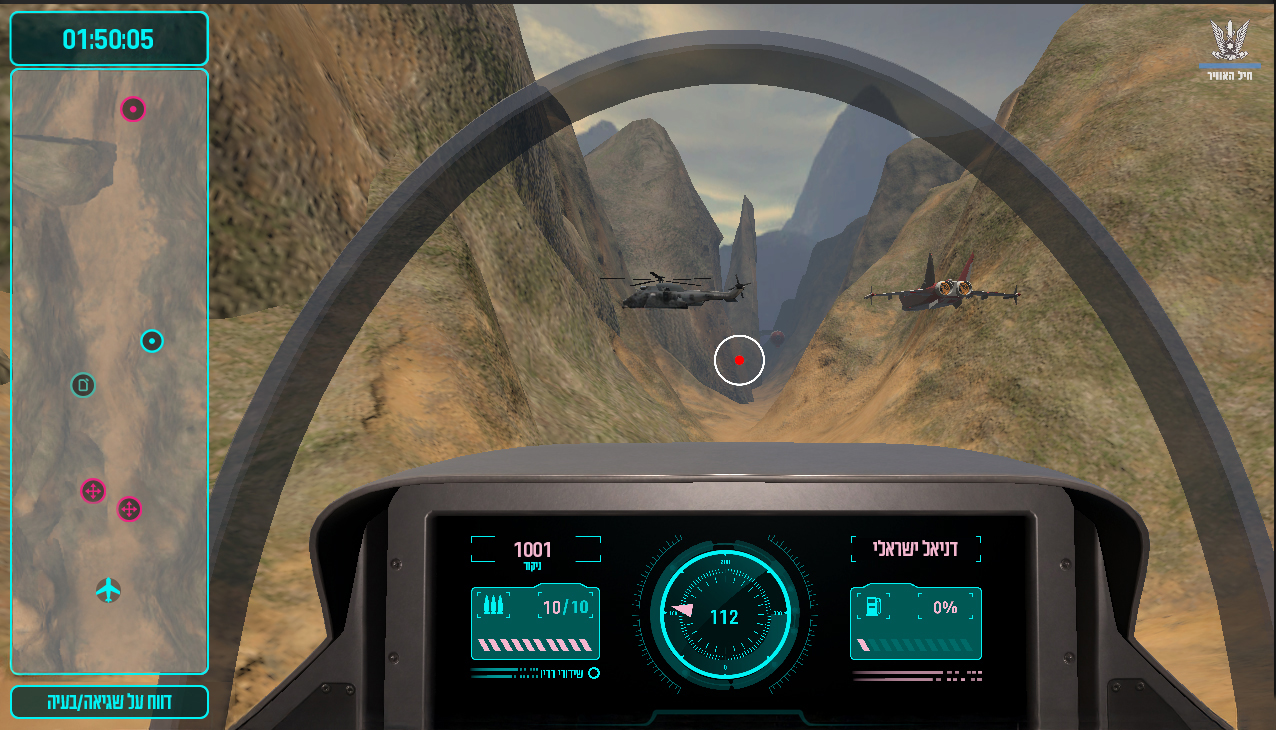
Problem Statement
The flight simulator was developed as a screening tool for potential Air Force trainees in the initial selection stages. However, the existing simulator was outdated, featuring an unclear and ineffective UI that hindered usability and assessment accuracy. To address these issues, the project focused on rebuilding the UI/UX and 3D environment to create a modern, intuitive, and immersive experience capable of evaluating candidates more effectively.
Research
Given the limited prior research on flight simulator design for candidate screening, the development process relied on comparative analysis of existing simulators. Several flight training programs and game-based flight simulators were examined to determine best practices in usability and interaction design. While no formal user research was conducted, insights from similar simulation-based training tools informed the design approach.
3D Cockpit Model
+ Various aircraft models were tested before selecting the F-35 cockpit, as it provided the most relevant and adaptable design.
+ Initially, a fully detailed F-35 cockpit was modeled, considering all its components, but due to performance constraints, the final version focused primarily on the screen interface.
+ The cockpit was modeled as a low-poly asset in Maya, textured in Substance Painter, and then implemented into Unity for real-time rendering.
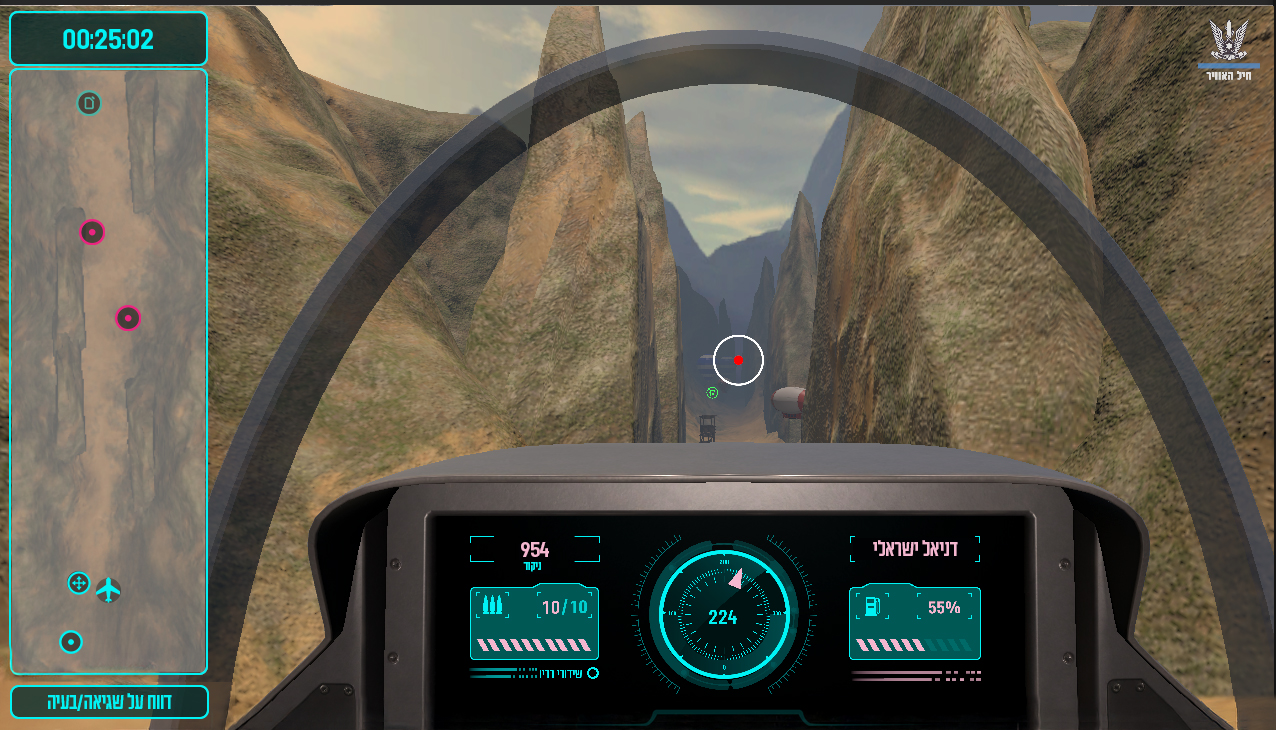
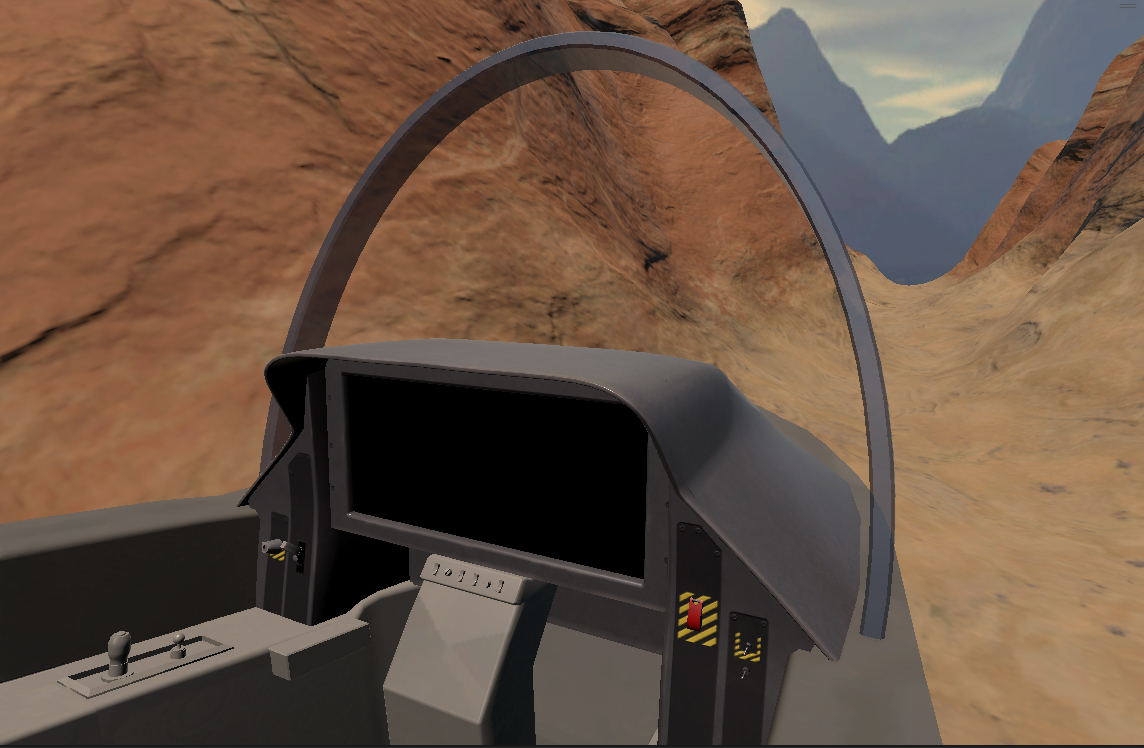
User Interface (UI/UX)
The user interface was designed to be modern, intuitive, and game-inspired, with a focus on accessibility and ease of operation. The UI tasks included:
+ The Main Control Panel was designed as an interactive dashboard for operating the simulation, allowing smooth control over different functions.
+ System Messages: Created real-time instructions that appeared visually on-screen or as audio cues, guiding the participant through the simulation.
+ A Tutorial that was developed for first-time users, ensuring they understood how to navigate the cockpit, control the aircraft, and respond to challenges before beginning the actual test.
+ Final Skills Test: Participants had to complete an assessment that measured key abilities relevant to flight training.

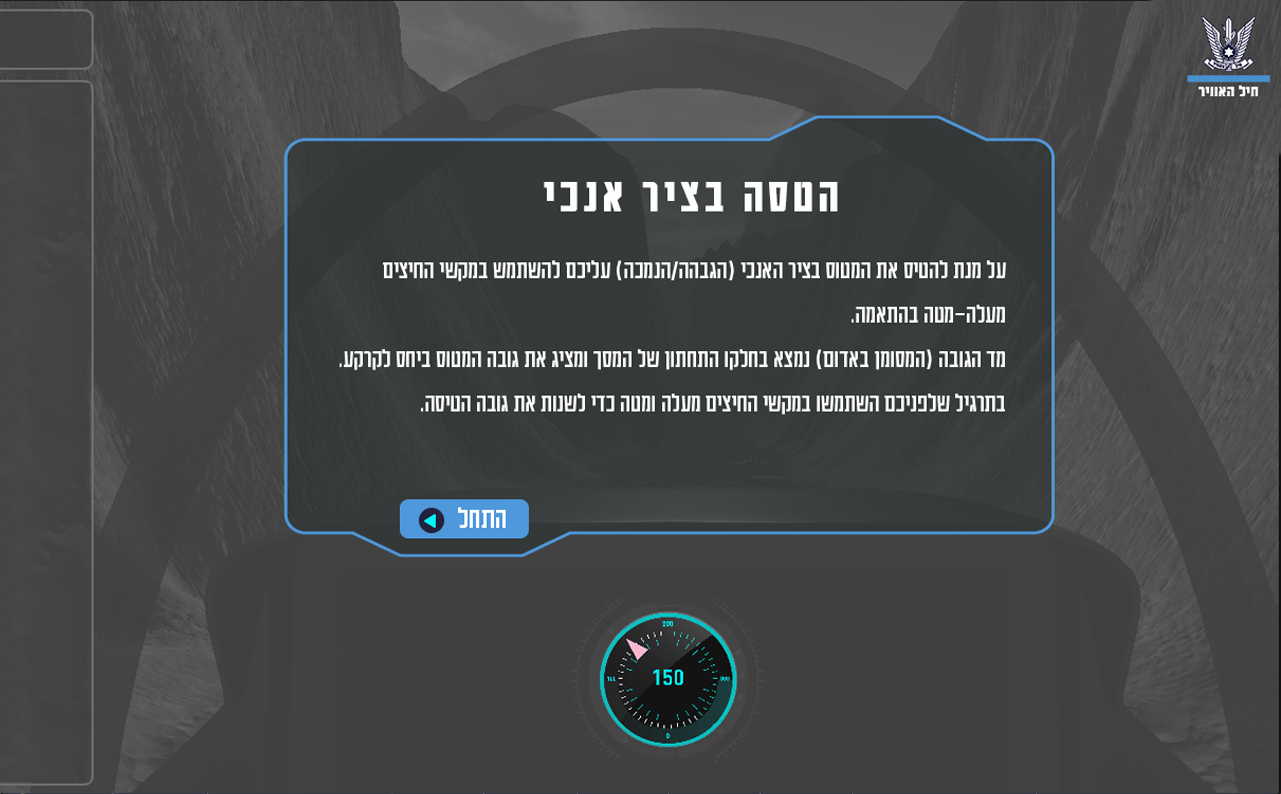

3D Environments & Dynamic Challenges
+ Four unique flight environments were designed to provide varied atmospheres and challenges, testing trainees' adaptability in different conditions.
+ Each environment introduced distinct visual and navigational elements, ensuring a well-rounded assessment of skills in varied terrains and weather conditions.




Insights
Throughout development, real-time testing led to continuous UI refinements and cockpit optimizations. The biggest challenge was balancing visual accuracy with performance constraints, requiring careful adjustments to the 3D cockpit model while maintaining immersion. The inclusion of multiple flight environments further enriched the simulator, allowing for diverse scenarios and difficulty levels.
Solution
The final simulator delivers an engaging and dynamic flying experience that simulates real-world training scenarios. Key enhancements include:
+ A refined F-35 cockpit model that maintains visual realism while optimizing performance.
+ A game-inspired UI that enhances user experience and provides intuitive controls.
+ Four distinct 3D environments offering varied atmospheres and flight challenges.
+ Immersive flight dynamics that assess candidates under different conditions.
The combination of 3D modeling, UI/UX improvements, and interactive design creates a training tool that blends realism with efficiency, supporting a more effective screening process.
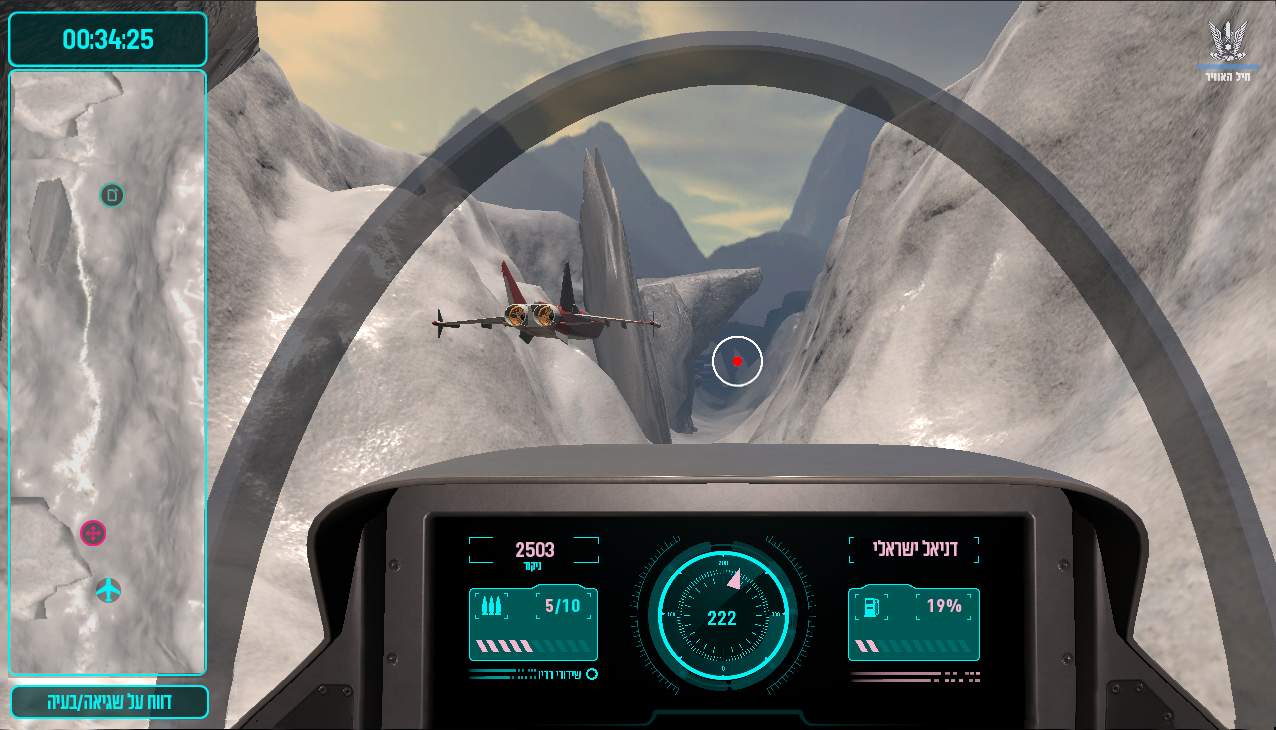

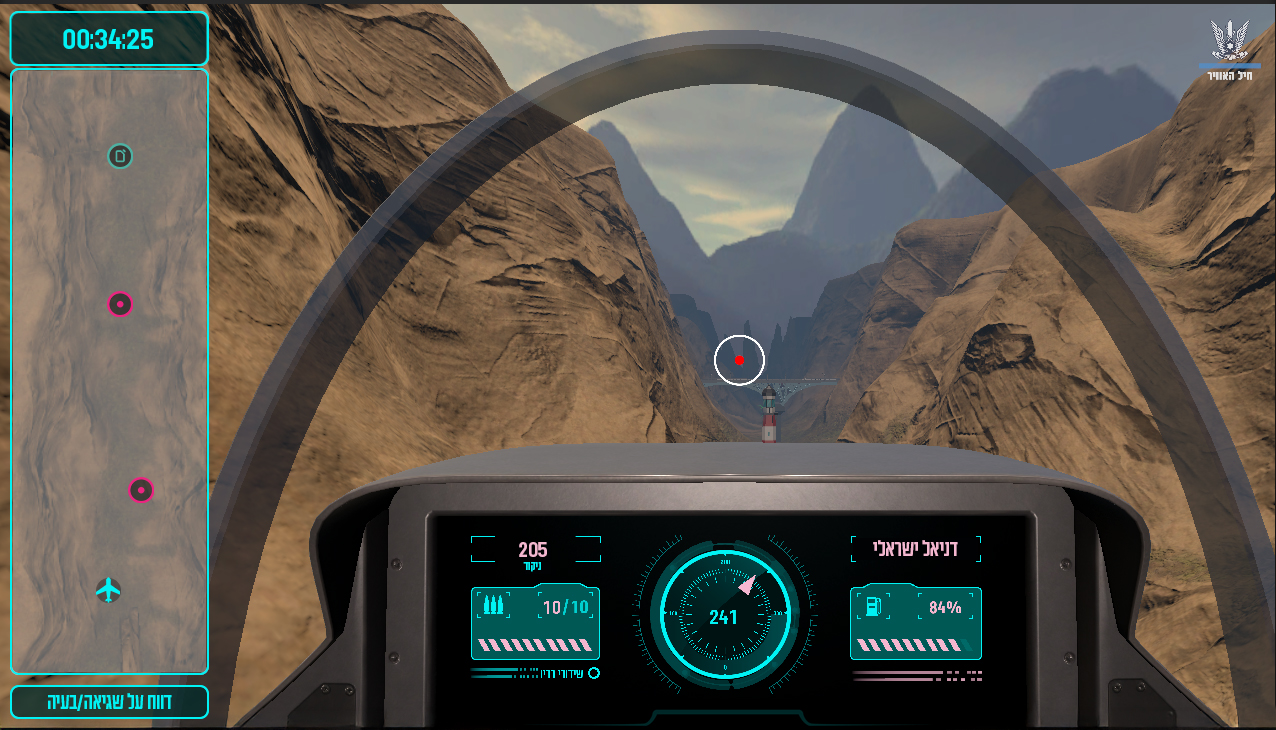
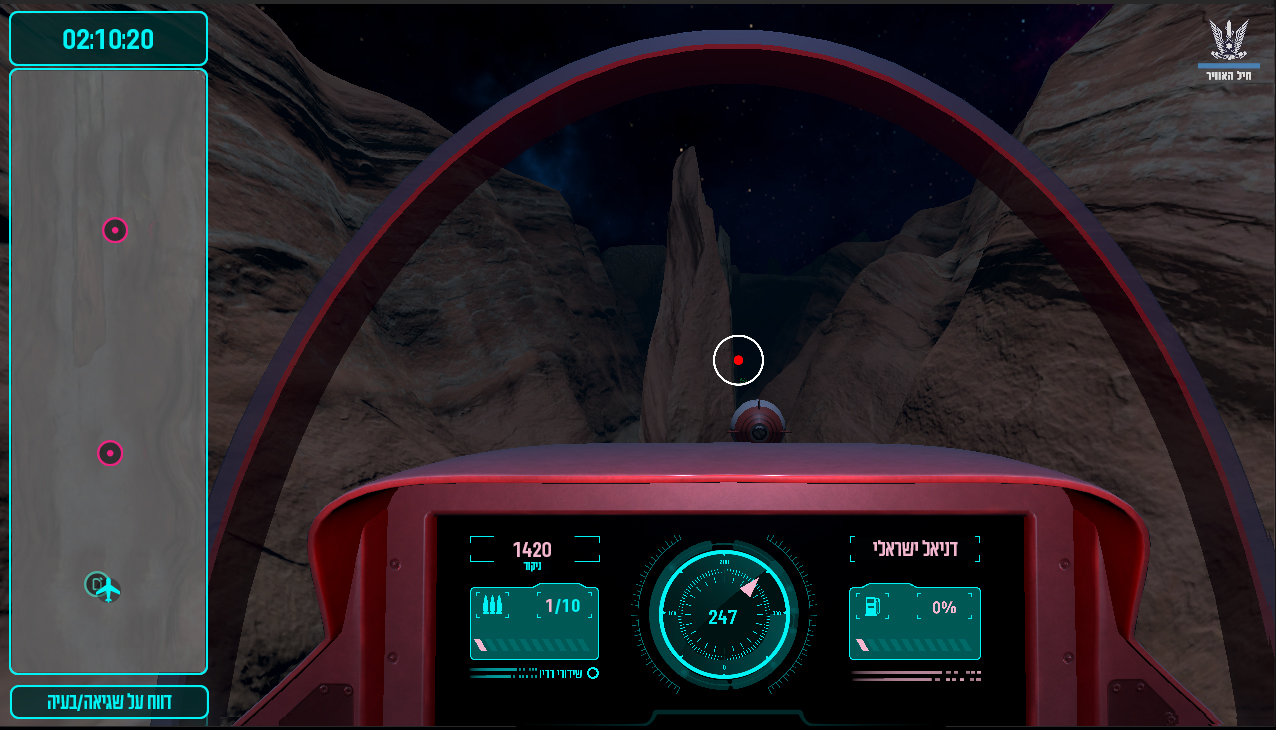
Result
The simulator has not yet been tested on real candidates, but its design represents a significant advancement over the previous version. It offers a visually engaging, performance-optimized, and functionally effective training tool for potential Air Force trainees, setting the stage for more immersive and accurate pilot screening in the future.